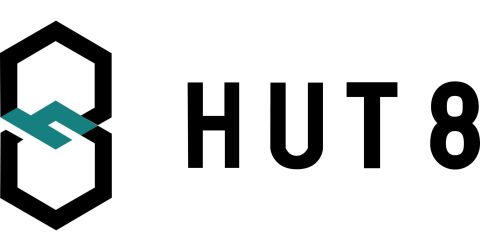Trump Family-Backed Cryptocurrency Mining Company Hut 8 Enhances Coinbase Credit Facility; Expands in Dubai
In a move that underscores the maturing relationship between cryptocurrency infrastructure and traditional financial instruments, Canadian Bitcoin miner Hut 8 Corp. has doubled its Bitcoin-backed credit facility with Coinbase Credit to $130 million. The revised agreement shifts to a fixed 9% interest rate—down from prior floating rates between 10.5% and 11.5%—and extends the maturity date to July 16, 2026. The deal delivers up to $65 million in additional non-dilutive capital, supporting Hut 8’s broad expansion into high-density data centers and AI infrastructure while preserving shareholder equity. It marks one of the largest crypto-collateralized loans in the sector and reflects growing institutional confidence in Bitcoin as a credible, secured asset.
Hut 8 Secures Larger, Cheaper, and Longer-Term Credit Backed by Bitcoin
Hut 8 Corp. has formally doubled its credit facility with Coinbase Credit, bringing the total to $130 million, and simultaneously secured significantly improved loan terms. The company transitioned from a floating interest rate—previously hovering between 10.5% and 11.5%—to a locked-in fixed rate of 9%. This restructuring also comes with an extension of the maturity timeline to July 16, 2026, giving the company two additional years to execute on its capital-intensive growth agenda.
According to statements from Hut 8 and Coinbase, the agreement not only expands the existing facility but embeds key protections, such as a no-rehypothecation clause, which prohibits Coinbase from reusing Hut 8’s pledged Bitcoin for other financial obligations. This clause, more commonly seen in traditional banking, enhances the security of the arrangement while signaling a deliberate push toward mainstream risk controls.
Asher Genoot, CEO of Hut 8, described the renegotiated terms as part of a broader strategic framework. “As we advance a robust pipeline of growth opportunities, we have partnered with Coinbase to strategically double the size of our credit facility and deliver improved terms,” Genoot said.
Institutional Embrace of Crypto-Backed Lending Deepens
The expanded agreement between Hut 8 and Coinbase reflects the rapid evolution of institutional crypto finance. Once viewed with skepticism, Bitcoin is increasingly being treated as a legitimate form of collateral by established players in the financial ecosystem. This trend is not just about growth—it’s about maturity.
The no-rehypothecation clause is central to this maturity. It ensures that Hut 8’s substantial Bitcoin reserves—over 10,000 BTC as of December 2024—remain protected, even while being used to secure a sizable credit facility. For Coinbase, this agreement aligns with its own trajectory in expanding services for institutional clients, particularly those with large-scale crypto operations. “We’re delighted to deepen our relationship with Hut 8,” said Matt Boyd, head of institutional financing at Coinbase, adding that the expanded facility aligns with both firms’ commitment to “risk-managed growth and capital efficiency.”
Avoiding Dilution Through Smart Leverage
One of the most significant aspects of the expanded facility is its structure as a non-dilutive capital infusion. By leaning on secured credit instead of issuing new equity, Hut 8 preserves shareholder value. This distinction is crucial in the capital markets, particularly for publicly traded companies in emerging sectors like digital asset infrastructure.
The ability to tap an additional $65 million in capital without diluting existing ownership underscores Hut 8’s disciplined approach to capital formation. Sean Glennan, the company’s Chief Financial Officer, emphasized that the amended credit terms reflect Hut 8’s commitment to maintaining a “resilient and efficient capital structure.”
Expanding Infrastructure to Meet Multi-Sector Demand
Hut 8’s access to increased credit coincides with its aggressive infrastructure buildout across North America. As of the end of 2024, the company operated 15 sites across the U.S. and Canada, supporting a combined 1,020 megawatts (MW) of energy capacity. The company’s mining operations have scaled to a hash rate of 21.0 EH/s, positioning Hut 8 among the leaders in the North American digital mining space.
Among the company’s flagship expansion efforts is the Vega Project in Texas, a 205 MW facility expected to go live in Q2 2025. Vega is built with rack-based Tier I data center architecture and features direct-to-chip liquid cooling systems that enable power densities of up to 200 kilowatts per rack. This infrastructure not only improves operational efficiency but also prepares Hut 8 for next-generation computing applications beyond Bitcoin mining.
Diversified Revenue Model Drives Financial Growth
Hut 8's financial performance in 2024 highlights its successful transition from a pure-play miner to a diversified digital infrastructure firm. The company reported annual revenues of $162.4 million, a sharp increase from $96 million in the prior year. This growth was primarily driven by the firm’s merger with U.S. Bitcoin Corp., which broadened its operational and revenue base.
Here is a breakdown of the company’s 2024 revenue streams:
| Revenue Segment | FY 2024 Revenue (US$ millions) |
|---|---|
| Bitcoin Mining, GPU-as-a-Service, Cloud Ops | 80.7 |
| Power Generation & Managed Services | 56.6 |
| CPU & ASIC Colocation | 17.5 |
| Total | 162.4 |
Notably, the company’s Bitcoin reserve reached 10,171 BTC by December 2024, with a market valuation of $949.5 million based on prevailing prices (Source: Bitcoin Treasuries).
Strategic Projects Underpin Long-Term Growth
Beyond the Vega project, Hut 8 has outlined several other initiatives that are expected to materially impact its top and bottom lines. The company recently secured a major colocation agreement with BITMAIN Technologies, which is projected to generate approximately $125 million in annual recurring revenue.
Additionally, Hut 8 is actively developing three large-scale AI data center campuses, which could collectively add more than 430 MW of capacity to its digital infrastructure portfolio. These projects reflect the company’s strategic pivot to capitalize on growing demand in artificial intelligence, high-performance computing (HPC), and edge data processing—markets with attractive long-term margins.
